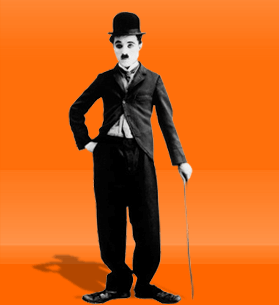 |
| |
| Photo Essays |
 |
|
|
|
 |
| Home | Author | Photo Essays | Links | Blog | Events | Reviews | Contact |
|
| |
TWO BRITISH MUSIC HALL TRADITIONS: TOPICAL SOCIAL HUMOR AND THE USE OF A COMIC CHARACTER AS THE SPOKESPERSON FOR THE COMMON MAN
PUBLICITY STILL: THE CHAMPION
Jeffrey Vance Collection
|
THE IMMIGRANT
Jeffrey Vance Collection
|
| |
PUBLICITY STILL: SHOULDER ARMS
Roy Export |
By establishing his screen character as a loveable comic underdog and then embroiling him in the burning social issues of the day (such as immigration and World War I), Chaplin cemented a bond between himself and his audience that lasted thirty-two years (1915 to 1947). Communicating in pantomime via his mouthpiece Charlie, Chaplin became an intellectually respected commentator on his times until he abandoned the little tramp entirely to appear as the much less sympathetic Monsieur Verdoux—a cynical predator and serial murderer born out of his disillusioning experiences with right-wing political oppression and the FBI. Although Chaplin did not literally play the little tramp character in The Great Dictator (1940), worldwide film audiences had no difficulty visually identifying and emotionally empathizing with his little Jewish barber character as the underdog tramp’s first cousin.
Viewed in hindsight, Chaplin’s courageous artistic decision to denounce publicly the Kristallnacht persecution of the Jews in Nazi Germany by transforming his little tramp mouthpiece into their symbolic spokesman proved to be the first political misstep that got him into the hot water which ultimately led to his permanent exile in 1952. Denounced publicly in the halls of Congress and labeled secretly by the FBI in its files as a political troublemaker and potential security
risk for his impolitic and Cassandra-like prescience concerning Adolph Hitler, Charlie Chaplin was officially designated a pre-mature anti-fascist (see next essay).
|
|
| |
| |
|
|
 |
www.ChaplinALife.com
© 2008 All Essay Rights Reserved.
All images from Chaplin films made from 1918 onwards, Copyright © Roy
Export Company Establishment._Charles Chaplin and the Little Tramp are trademarks and/or
service marks of Bubbles Inc. S.A. and/or Roy Export Company
Establishment, used with permission. |
|
|